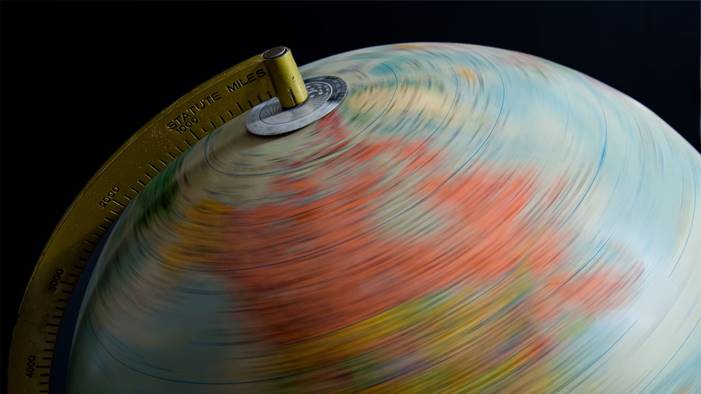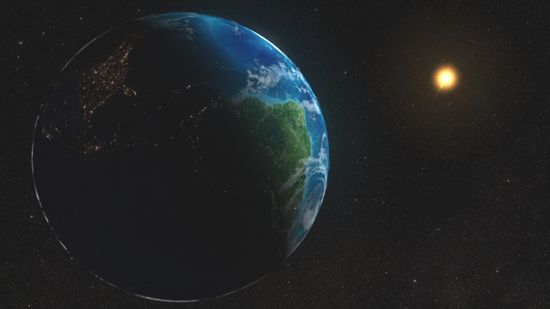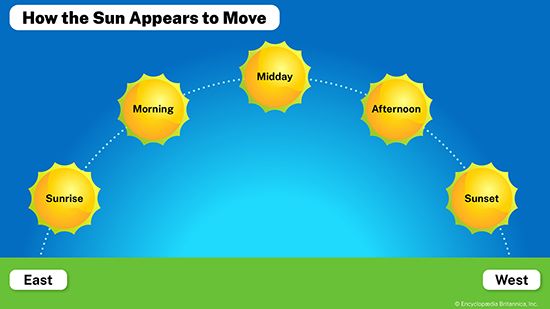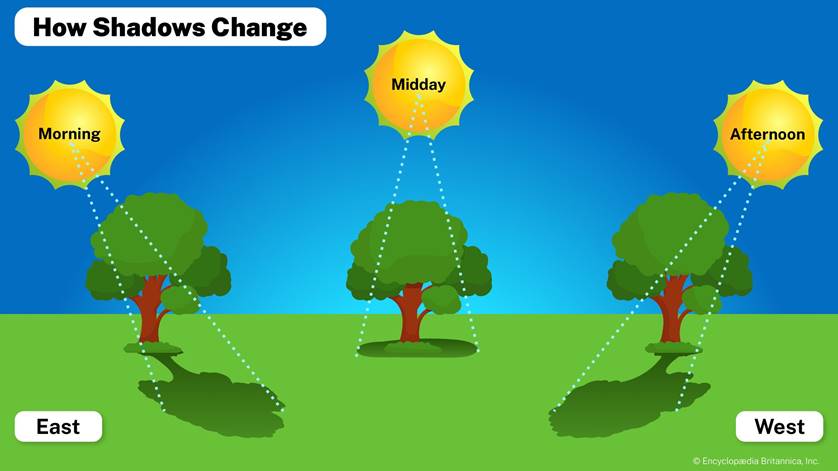Patterns of
Daily Change
Learning
Objectives
By the end of this unit, you will be expected
to understand Earth's rotation and its effects on daily life. You'll learn to
describe how the Earth's rotation causes the Sun to appear to move across the
sky, leading to our day and night cycle. You'll also understand how this
rotation affects the changing shadows we see throughout the day.

You
may not feel Earth spinning, or rotating, but it does…and fast!
©
Rob Byron/Shutterstock.com
Lesson
Summary
This lesson introduces you to the idea that Earth’s
rotation causes patterns of daily change. Through videos, images, and text, you
will learn that Earth’s rotation gives the Sun the appearance of motion and
causes patterns of daily change, such as day and night, and changes in shadows.

As
Earth rotates, the part that faces the Sun experiences daytime. For the other
part, it is nighttime.
©
NASA
Key Concepts
1. Earth's rotation is the
continuous spinning of our planet around its axis, a cycle that takes roughly
24 hours and results in the sequence of day and night.
2. The Sun’s apparent
movement from east to west during the day is not due to the Sun's movement but
is a result of Earth's rotation, which alters our perspective of the Sun's
position in the sky.
3. The rotation of the
Earth not only influences the Sun's apparent position but also significantly
impacts the shadows we observe, as their length and direction change throughout
the day in response to the Sun’s shifting position.

As
Earth rotates, the Sun moves through the sky, from sunrise to sunset.
Encyclopædia Britannica, Inc.
Background
What is Earth's rotation? It is a continuous
movement of our planet spinning around an invisible line known as its axis.
Think of it like a spinning top that never stops! This rotation takes
approximately 24 hours to complete, creating the cycle of day and night that we
experience.
Have you ever watched the Sun rise in the east
and set in the west? While it seems like the Sun is moving across the sky, Earth’s
rotation gives the Sun the appearance of motion. This is why we see the Sun in
different positions at different times of the day.
Along with the Sun’s position changes, Earth's
rotation also affects the shadows we see. As the position of the Sun changes
due to Earth's rotation, shadows cast by the Sun also shift and change their
length and direction. This is why your shadow looks different in the morning
compared to the afternoon!

Notice
how the shadows cast by a tree change throughout the day.
Encyclopædia
Britannica, Inc.
Expedition
Learn
Click on the image to begin your unit.
